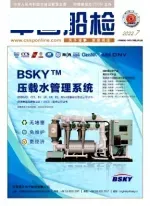New Technology Trend For LNG-Fuel Carrier
By Qin Qi & Yang Jun
LNG fuel started to be used in LNG carriers in 1964,but not in other ship types until the year of 2000.According to statistics, from 2000 to 2010, there were 22 ships in total which adopted LNG as fuel all over the world. How much influence could these ships exert on emission control? How will their technology develop in the future?
Compared with other marine fuels, the main advantage of LNG fuel is less impact on environment with its minimum emission. It is known that adopting LNG fuel could help reduce CO2emission by 10%~20%, NOx emission by 90%, and sulfide and particulate matter emission by 100%. In addition, the LNG-fuelled main engine does not need to install lube oil cleaning equipments, and the internal environment is better. However, as marine fuel,LNG compels the need to change the design layout of main engine and fuel tanks, and the space required for cylindrical pressure tank is about 3~4 times as much as equivalent marine diesel. Special gasholder and cabin structure increases the storage weight of LNG, which is about 1.5 times that of marine diesel. This pushes up construction cost by 8%~20%, and the maintenance cost is also increased. At present, the majority of LNG fuelled carriers constructed are ferries, including car/passenger ferry, ro-ro vessel, ro-ro passenger ship and etc. Because most of these ships are engaged in short sea navigation,the requirement for the size of LNG gasholder is lower.
European countries are leading the world in the development of LNG-fuelled carriers, among which Norway is particularly advanced in LNG infrastructure, LNG fuelled carrier technology and rules development. Norwegian government has played an active role in promoting the development and demonstration of LNG fuel application.In terms of the progress of technology and equipments of different types, the development of LNG -fuelled carrier is not only conducted by designers and ship yards, but even more through joint technological research programs by shipowners, class societies, equipment manufacturers,design companies and ship yards, many of which have also acquired financial aids from government. In terms of R&D programs, the application of LNG fuel in mainstream ship types will be the focus of research, and the new technology is constantly expanding into new fi elds such as the research of storage tanks extending from type C to type A and type B,the development of new fuel gas supply system and etc.
While some of the main European ship owners and design companies are developing LNG-fuel technology, South Korean and Japanese shipbuilding enterprises are also actively preparing for the development of LNG-fuelled carriers. Among them, Mitsubishi Heavy Industries is the main engine supplier for many LNG-fuelled carriers. In 2009, Mitsui OSK Lines announced its “ISHIN-II” design concept of the environmentally friendly ferry adopting LNG fuel. Daewoo Shipbuilding and Marine Company is engaged in developing large LNG-fuelled container ship, which is also teaming up with MAN to develop MEGI engine and DSME high pressure and cryogenic fuel supplying system applicable for the container ship of 14,000 TEU.

